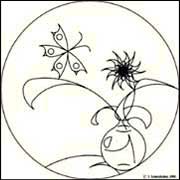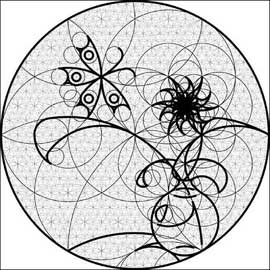Selected papers on the nature of beauty, interestingness, & low-complexity art:
[9] J. Schmidhuber. Art & science as by-products of the search for novel patterns, or data compressible in unknown yet learnable ways. In M. Botta (ed.), Multiple ways to design research. Research cases that reshape the design discipline, Milano-Lugano, Swiss Design Network - Et al. Edizioni, 2009, pp. 98-112. (Keynote talk.) PDF of preprint.
[8] J. Schmidhuber.
Driven by Compression Progress: A Simple Principle Explains Essential Aspects of Subjective Beauty, Novelty, Surprise, Interestingness, Attention, Curiosity, Creativity, Art, Science, Music, Jokes.
Based on KES 2008 keynote and ALT 2007 / DS 2007 joint invited
lecture (below). Short version: Journal of SICE, 48(1):21-32, 2009. PDF. Long version in G. Pezzulo, M. V. Butz, O. Sigaud, G. Baldassarre, eds.: Anticipatory Behavior in Adaptive Learning Systems, from Sensorimotor to Higher-level Cognitive Capabilities, Springer, LNAI, 2009, in press.
Preprint (2008, revised 2009): arXiv:0812.4360.
PDF (Dec 2008).
PDF (April 2009).
[7]
J. Schmidhuber.
Simple Algorithmic Principles of Discovery, Subjective Beauty,
Selective Attention, Curiosity & Creativity.
In V. Corruble, M. Takeda, E. Suzuki, eds.,
Proc. 10th Intl. Conf. on Discovery Science (DS 2007)
p. 26-38, LNAI 4755, Springer, 2007.
Also in M. Hutter, R. A. Servedio, E. Takimoto, eds.,
Proc. 18th Intl. Conf. on Algorithmic Learning Theory (ALT 2007)
p. 32, LNAI 4754, Springer, 2007.
(Joint invited lecture for DS 2007 and ALT 2007, Sendai, Japan, 2007.)
Preprint: arxiv:0709.0674.
PDF.
Curiosity as the drive to improve the compression
of the lifelong sensory input stream: interestingness as
the first derivative of subjective "beauty" or compressibility.
[6]
J. Schmidhuber. Developmental Robotics,
Optimal Artificial Curiosity, Creativity, Music, and the Fine Arts.
Connection Science, 18(2): 173-187, June 2006.
PDF.
This paper emphasizes that beauty and interestingness
are different things: the former reflects low complexity with respect to the observer,
the latter the learning process leading from high to low subjective complexity.
[5]
J. Schmidhuber.
Facial beauty and fractal geometry.
Note IDSIA-28-98, IDSIA, June 1998, published in the Cogprint Archive
(ca. 450K, including 5 color figures).
[4]
J. Schmidhuber.
Low-Complexity Art.
Leonardo,
Journal of the
International Society for the Arts, Sciences, and
Technology, 30(2):97-103, MIT Press, 1997.
Print on high-resolution (600 dpi) printer,
preferrably double paged on A4 paper
(172 K, uncompresses to 1.1 M).
HTML version.
[3]
J. Schmidhuber.
Femmes Fractales. Report IDSIA-99-97, IDSIA, December 1997.
[2]
J. Schmidhuber. Algorithmisch einfache Kunst. Manuscript, 1994.
[1]
J. Schmidhuber.
Low-Complexity Art.
Report FKI-197-94, Fakultät für Informatik, Technische
Universität München, 1994.































